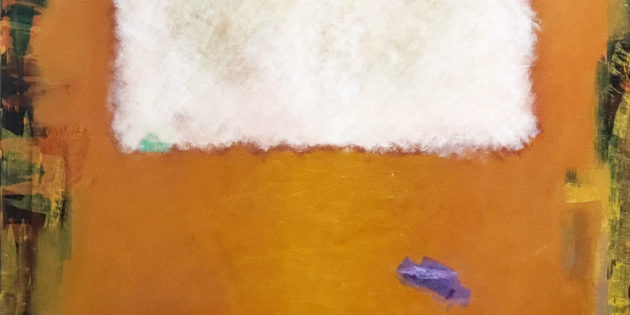“There is a crack in everything; that’s how the light gets in”
(Leonard Cohen)
With rare exceptions, artists, like writers, work alone. Whether the radio is blasting or the silence is heavy, the studio is the confessional booth and as such, it allows for the artist’s feelings to find their true expression in The Work.
But is this a truthful statement, generally applicable to all artists?
I have been an artist for many decades. I’ve always been a cerebral creator. Whatever the circumstances in my life, my process was not affected and my work never reflected whatever life was bringing to my doorstep. If I was working on a specific series, the “look”, the concept and the objective were always clear and well determined. This does not mean that I painted by rote or by numbers. The struggle was an almost constant, the search never stopped, failures were painful. But the work never expressed my personal feelings, even when the subject was near and dear to my heart as was my series on the Endangered Species.
Despite this being my modus operandi, I always yearned to be able to pour my heart out onto a canvas. On the very few occasions when I tried, I hated the results and promised myself not try again. The lack of control or an intuitive expression always looked like the work of an amateur to me, it did not “fit the composition”. And yet I continued to yearn for it but did not know how to go about it and how to handle it if it were ever to bob up from the depths of my subconscious.
Recently, I signed up for a comprehensive, intensive 3-month art workshop. Here I would re-visit elements of design, composition, color, value and much more. The primary process, however, could not be avoided: I had to start all paintings from intuition, allowing for a “messy” expression if that’s what came out. But instead of judging and berating these results, I would then apply the clear discernment of the art elements and Principles. The method held hands with the madness, so to speak and the give and take between these two – Intellect and Intuition – had to permeate the process, beginning to end.
So, after many decades of cerebral work I find myself facing a radical change in my art process. It is not easy to guide an old canoe (my heretofore way of working) with completely new oars. But it is not only the physical process of allowing the paint to flow and the shapes to form without playing the traffic cop. What is of paramount importance here is to allow myself to be vulnerable, to accept the cracks and maybe even the breakages. And once these are accepted a gentle, even compassionate process steps in and I learn to let the light in, be it by the application of the painting Principles or by the humble acceptance of what my intuitive impulse brought forth as part of a deep, important and personal process. I also face my vulnerability as a person and as an artist when my intuitive marks and brushstrokes do not look like the Me I’ve grown accustomed to and whose face I chose to show to the world.
In some perverse way, I do not recognize my work when I am not controlling it one hundred percent. Yet.
The reason why I joined this workshop was not because unique, deep and comprehensive way it taught the Art Principles and other techniques. Ninety nine percent of my reason to sign up was because it would guide me to create my most authentic work.
One would argue that even if purely or mostly cerebral, my work has always been authentic since it did not copy of plagiarize anyone else. But to me it never felt completely so because my feelings were never involved in it. I had to allow for the cracks so the light could come in and heal the dichotomy.
It must be said that an artist cannot separate her life from her Art. Therefore, the secondary process of this workshop aims at intrinsically connecting the two while providing pointers and guidance on how to accomplish that. The layers in this process are many but there must be a thread connecting my life with how and what I create. Vulnerability and compassion straddle both. The nurturing of one affects the other organically. And this realization results in a richer life and a deeper Art.
For so many years I felt that it was important to me to add the Vulnerability element into my work but it did not occur to me that I could not have that without affecting all other aspects of my life. There could be no Jekyll and Hyde, so to speak.
So here I am, this well-travelled canoe getting used to shiny new oars that still need some oiling and lots of getting used to. But there is no doubt in my mind that this is when the real adventure begins!
